When creating a floor covering, it is necessary to take into account a lot of different factors. Modern materials allow you to give the surface additional strength, moisture resistance, provide it with protection from mechanical damage, etc. It is craftsmen who often ask the question of how to lay floors in an apartment in order to take into account the characteristics of a particular room and at the same time save money.
Types of coatings
First of all, it is worth noting that there is no absolutely ideal floor covering. It is necessary for each individual room to select exactly the material that will best suit its technical specifications and operating features.
At the same time, carpets and floor runners can be immediately excluded, since they are more related to decorative and interior elements, and not to finishing work.
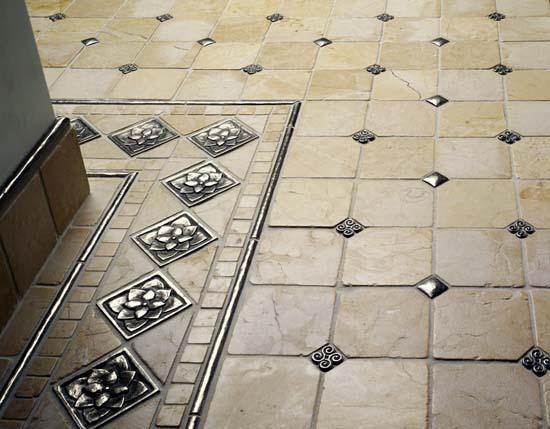
Tile
- Many manuals that talk about what is best to lay on the floor in an apartment advise using ceramic tiles or PVC modules for the bathroom or kitchen.
- This material tolerates moisture well, even if water is poured directly on it.
- It copes well with sudden temperature changes and high heat.
- Also, the tiles perfectly withstand various types of mechanical stress, and PVC modules can withstand even strong impacts and high loads.
- The disadvantages of this coating include the complexity of installation and the fact that the price of this material is sometimes too high.
- If the floor does not have additional heating, then the tiles will create additional discomfort, since they cannot maintain the temperature for a long time and constantly exchange heat with the concrete floor.
Advice! It is worth paying attention to the fact that there are tiles for the floor and for the walls. At the same time, there is a big difference between them, which is expressed in the quality of the coating and the ability to withstand high loads.
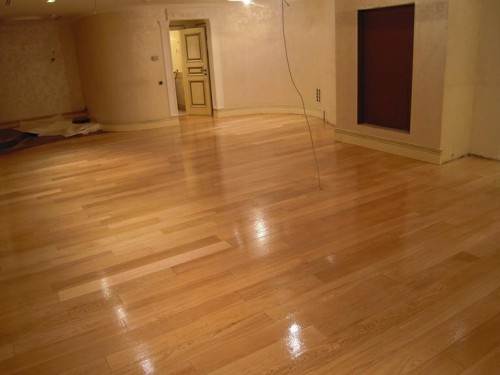
Linoleum
- This material is very suitable for almost all rooms. At the same time, manuals that tell you how to lay floors in an apartment from scratch advise you to be very careful when choosing linoleum, since there are many varieties of it.
- The hallway is usually covered with a coating that is highly resistant to friction and other mechanical damage.
- For children's rooms with a warm base and anti-slip protection.
- If you need to decorate a living room, then a material with insulation and a high-strength top layer of coating is best suited.
- Among the positive qualities are ease of installation and relatively low cost.
- Negative properties include too much variety in the assortment, which greatly complicates the choice and increases the possibility of purchasing a fake.
Advice! When purchasing linoleum, you need to pay attention to its environmental friendliness. It should not have any harsh and unpleasant odor, and to confirm its quality it is accompanied by a special certificate.
Laminate floors: installation guide” href=”http://shkolapola.ru/lamynat/723-laminirovannye-poly”>laminated surfaces for flooring
.Floor- this is a structure that lies on top of the ceiling and consists of several layers. Plays a huge role in creating comfort and cozy interior. Many people today are concerned about the question: which floors are best for an apartment, what to make them from and how to choose. And this is no coincidence. Today's market is simply teeming with various offers, but not all of them are ideal for an apartment, some options and It's better not to use it at all.
When renovating a floor, everyone wants it to turn out perfect. smooth, beautiful and safe for health. Choosing the right one flooring plays a key role in this. Today vremont-kvartiry.ru will tell you what is best to make the floor from in all rooms of your apartment.
Basic conditions for the right choice
The process of choosing a coating is a rather complex task that must be approached with full responsibility. Floor repairs are done at long term and carelessness in choosing can make your flooring in the apartment unreliable and will not last very long. When answering the question which floor is better, the following features must be taken into account:
- Condition of the floor and who will do the repairs. First of all, you need to assess the “scale of the disaster,” that is, you must carefully examine your floor, identify its defects and decide on the coating. If you are going to do the repairs yourself, then choose a coating that you can afford, but if you decide to use the services of repair teams, then the choice will depend on your financial capabilities.
- Room view. This could be: a children's room, a bathroom, a bedroom, a living room, a kitchen or a corridor. For each of them would be better suited a specific coating that will satisfy all operational features. For example, you are unlikely to use tiles for the hall, and laminate for the bathroom.
- Price of floor coverings very important. Before choosing coverage, you should calculate the costs you can afford. If the money issue is not a pressing issue for you, then you can choose the most expensive materials and pay for the services of the best repairmen without much hesitation. If you don’t have a lot of money, then you will have to narrow your choice a little. In such cases, choosing “imitations” may be suitable, for example, linoleum with an imitation floor made of expensive wood.
- Floor unevenness. At this stage it is necessary to evaluate the difference between the maximum and minimum heights floor in the room, because not any coating can be used with large differences in this indicator.
If a fairly wealthy family lives in the apartment, then the best option there will be an elegant and expensive floor that will maximally emphasize their material capabilities.
What is the best material to make a hall floor from?
Hall– is the face of the apartment. In this room we receive guests and spend a lot of time, for example: watching TV, reading a book or playing chess with one of the family members. In view of these features, the floor of the hall should have the most "executive" coverage throughout the apartment.
A good solution would be use of parquet. It is perfect for this room. It has an unsurpassed appearance and is made only from natural wood. When choosing wood, pay attention to its texture. So, for example, beech parquet will emphasize the sophistication of the apartment and the delicate taste of its owners. Birch– lighter than beech, it can be used in small spaces, it will make them visually wider.

An important aspect will be the parquet varnish. The service life of the coating directly depends on its quality. If the issue of quality comes first for you, give your preference Finnish manufacturers. Their varnish is transparent and quite strong, which allows you to preserve the rich texture of the wood and protect it from various damages.
If your first priority is financial issue– you can opt for laminate with imitation parquet. It is not that expensive, but it is also made from natural wood and has a beautiful pattern that will add sophistication to the room.
The hallway requires reliable coverage
The hallway is the most accessible room in the apartment. It connects all the rooms and is a kind of link between them. That is, in order for you to move from the kitchen to the living room, you will need to walk along the hallway. Also, the hallway comes into contact with the largest amount of dirt in the apartment, since we enter it from the street in dirty shoes, so its floor should easy to wash and not afraid of mechanical damage. This will work well with:
- Ceramic tiles;
- Porcelain tiles;
These coatings wash well and do not wear out quite quickly. You can also add laminate to them. It has similar qualities, although it is not as durable, but it would be a good option for a hallway.
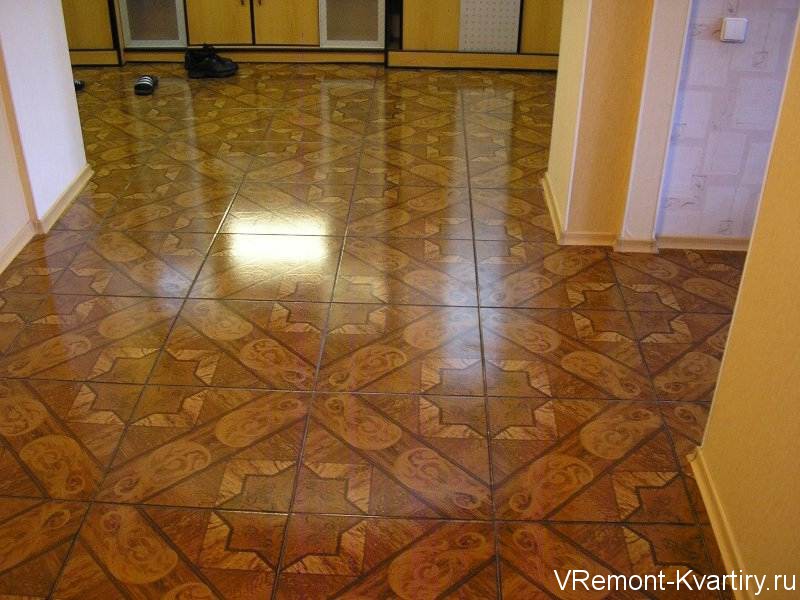
Often hallways do not have extra square meters. For them visual expansion– we recommend using light colors coverings, they will help expand this room.
Comfortable sleeping cover
The bedroom, in contrast to the hall and hallway, has significantly less traffic. We wake up in it in the morning and go to bed at night, but we often spend the rest of the time in other rooms.
The bedroom is pretty private corner of the apartment and guests come there quite rarely. It follows from this that choosing a floor here should be based on personal tastes. It is advisable that the covering be quite warm, since it is in this room that we walk barefoot.
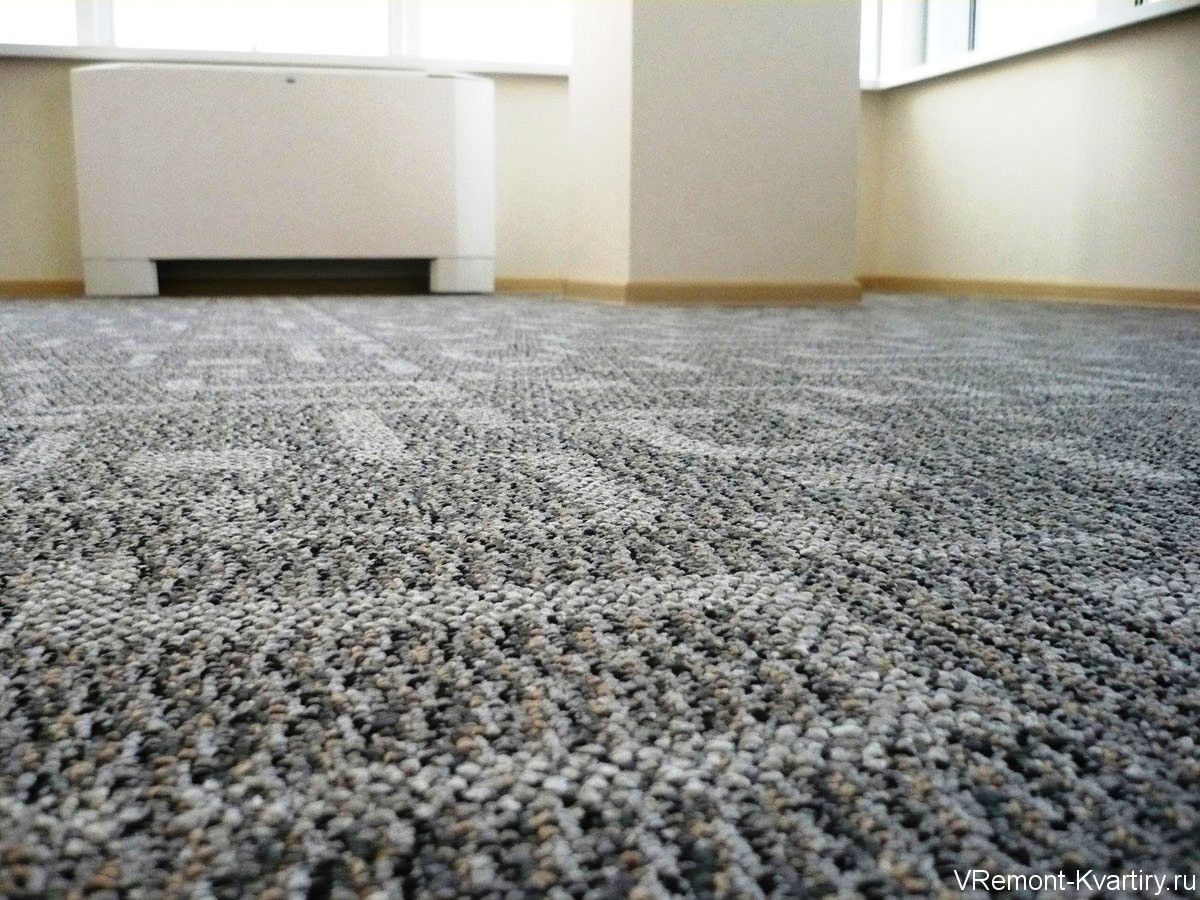
The following would suit these requirements well:
- Carpet;
- Parquet;
- Wooden floor.
They are quite warm and comfortable to walk on barefoot.
Relatively recently, the best flooring for a bedroom, and an apartment in general, began to be considered laminate. It is quite durable, lasts a long time and has a wide variety of patterns on the surface. However, it is not as warm as the above coatings, however the system warm floor can solve this problem.
Reliable kitchen floor
Like the hallway, the kitchen is a fairly used area of the apartment. Although people do not wear shoes here, work is in full swing here preparing lunches, dinners and breakfasts for the whole seven. Based on this, the best coatings floors for the kitchen will be those that are not afraid of damage and are easy to clean.
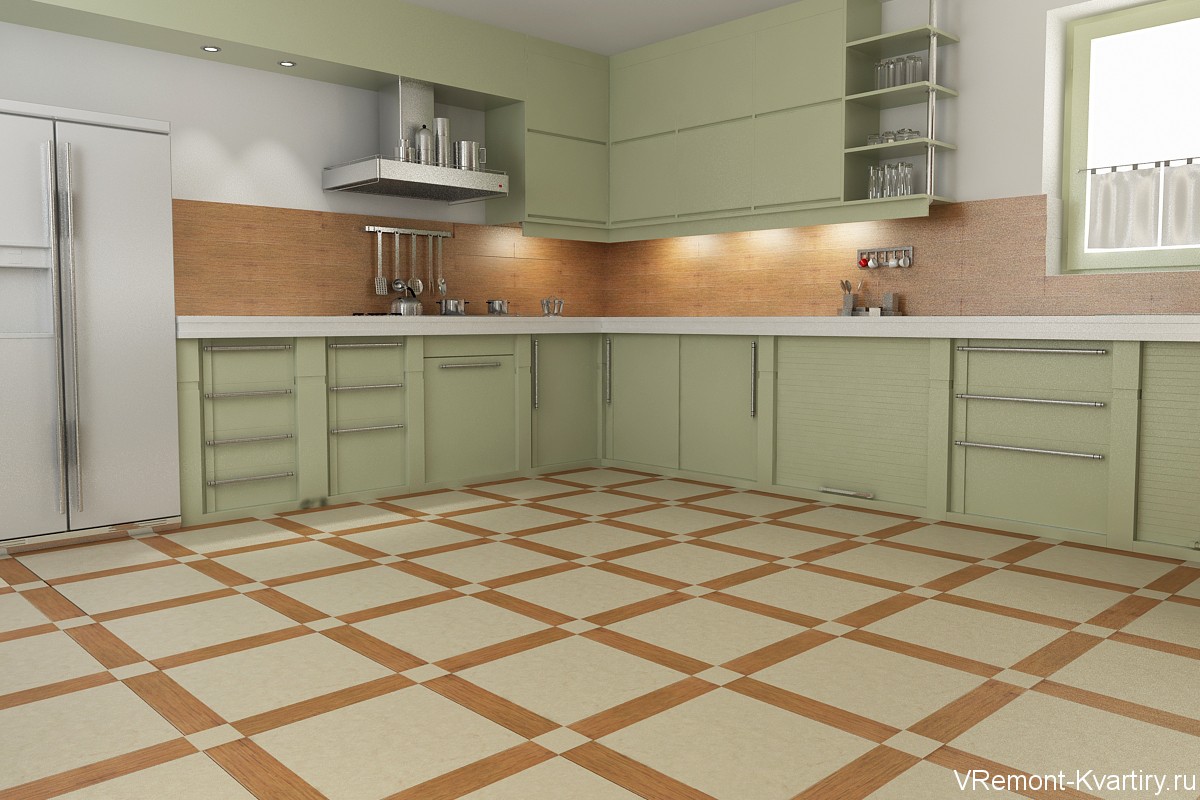
In addition to everything, the kitchen floor is subject to falling dishes and splashing hot fat. The new coating must be ready for this. Well suited for these purposes ceramic tiles . It is durable and beautiful, and the variety of product range will allow you to choose the design that suits you.
Bathroom flooring
Bathroom- the most humid floor in the apartment and the best floor for it will be the one that is perfectly protected from moisture. Such coatings can include:
- Tiles;
- Self-leveling floors
- Sealed cork coverings.
They perfectly protect from moisture and are easy to clean if they get dirty. Self-leveling floors can give the bathroom interior an extraordinary appearance with the help of special 3 D drawings.
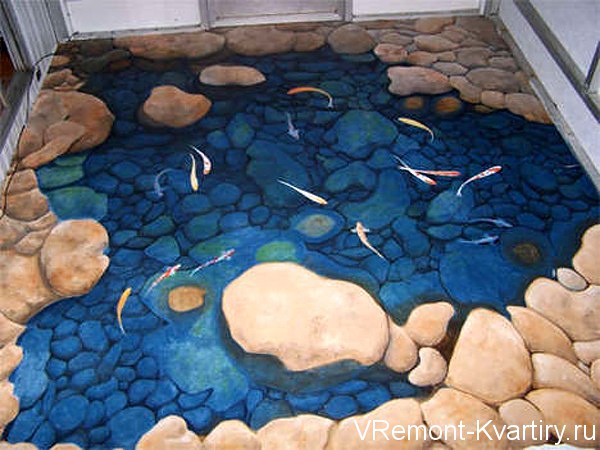
An additional aspect of any bath is warm floor. Can be used as electric options, and liquid from the heating system. This is due to the coolness of the floor coverings for this room, but it’s so nice to stand on something warm after swimming.
Nothing lasts forever, and neither do flooring. They wear out and deteriorate, but it all happens over time. It directly depends on the quality of the materials you choose. their service life. Don't skimp on floor coverings, because they fit not for one year, and in some cases – on several decades. We hope that the question of which floors are best for an apartment is closed and you have obtained the information you need. If you have any questions, we will be happy to answer them in the comments.
Most often the “catch” is construction work occurs due to any uncertainties. It’s not always possible for many owners to decide right away finishing coat walls and floors in houses and apartments.
Many owners of private or country houses stop before choosing wall coverings, deciding between wooden clapboard and plasterboard boards.
Also, very often both builders and owners are faced with the question of what to lay on the floor, since today there are plenty of answer options.
What material can be laid on the subfloor in an apartment?
 View finishing material depends on how level the base is
View finishing material depends on how level the base is The question of what to put on the floor in an apartment comes up every time interior renovation to this stage. Indeed it is current issue since there are a number of materials that have their own advantages and disadvantages, and it is impossible to clearly decide which material is better and which is worse.
In our article, we will not consider exclusive and expensive flooring materials, since such information is not necessary for the average owner - a builder who will carry out repairs with his own hands. 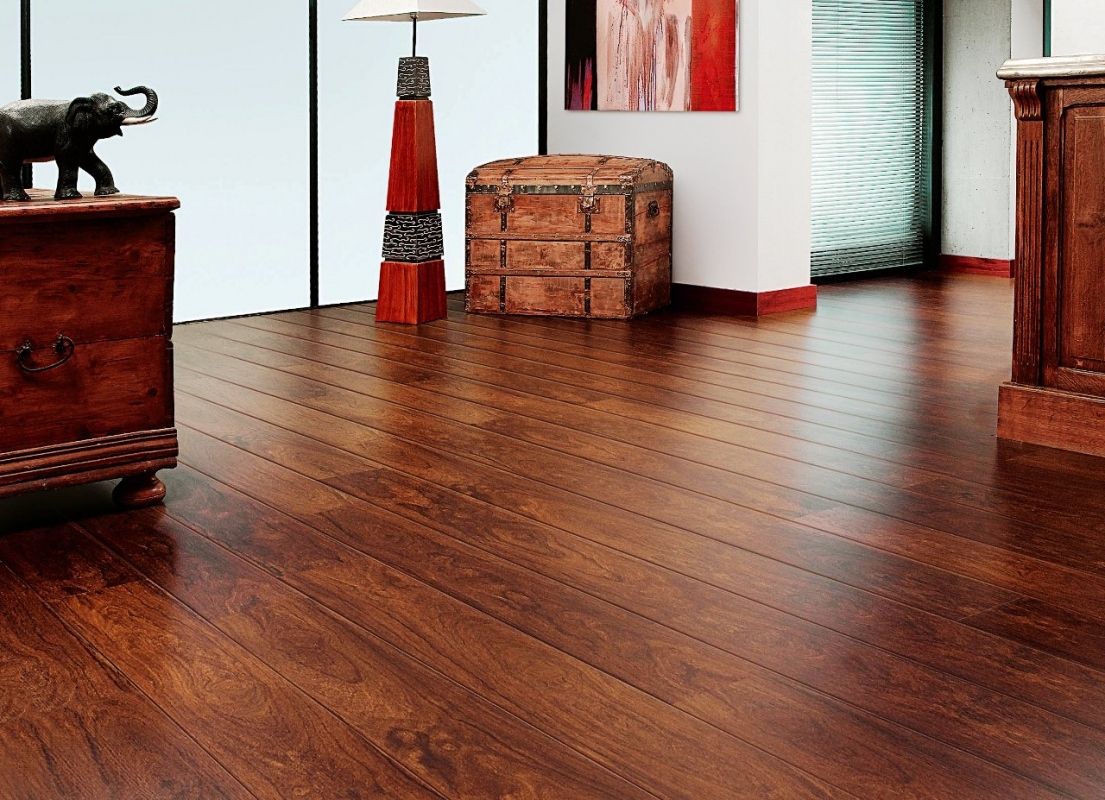
Most often these days, the following are used to organize flooring in an apartment:
- laminate;
- linoleum;
- carpet
 The tile is well suited for the hallway and bathroom
The tile is well suited for the hallway and bathroom These 4 types of flooring materials are rightfully the most popular coatings.
Some of them have special purposes for certain premises, possessing some unique properties.
For example, ceramic tiles should be placed in rooms with high humidity, which include a kitchen, bathroom and balcony. The carpet should be placed in living rooms– bedrooms and living rooms.
 Laminate is a universal material
Laminate is a universal material Laminate and linoleum are universal materials, which, depending on the type, can be laid in almost any room.
Because due to the large amount of moisture, laminate and linoleum will begin to delaminate over time, which is unacceptable for finishing flooring.
It should be remembered that laminate with linoleum becomes slippery when moisture gets on the outer layer, which can lead to unexpected injuries.
Moreover, in this room there are heavy objects (bathtub, sink, toilet), the impact of which as a result of a fall would be extremely undesirable.
Laminate as a flooring material
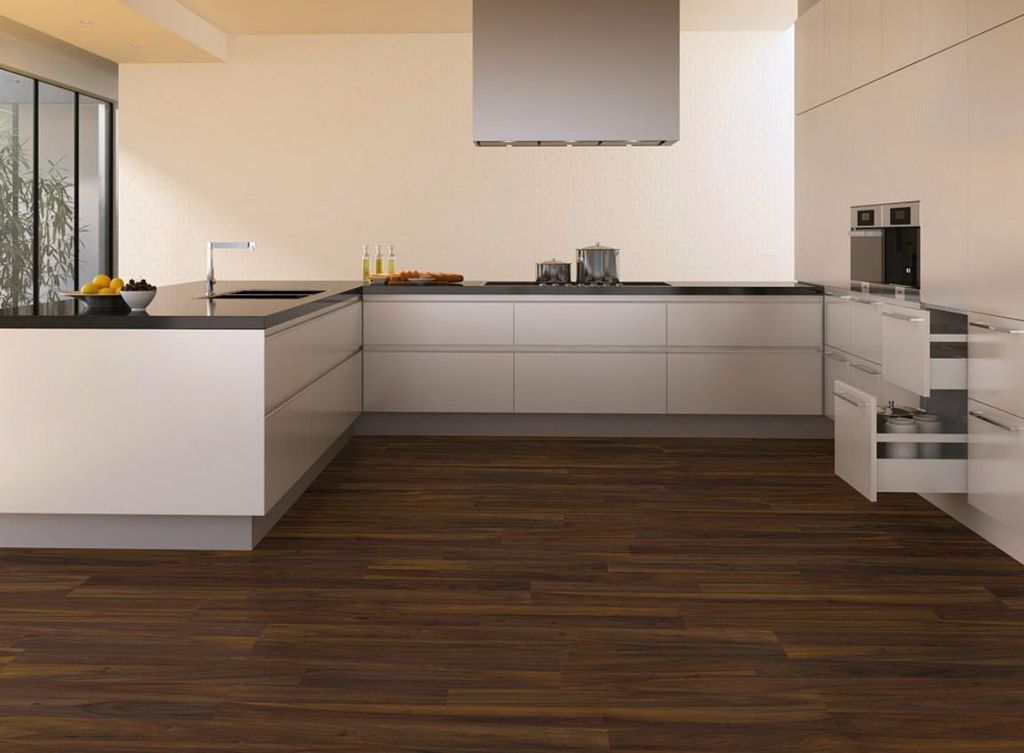 When buying laminate, it is important not to make a mistake in choosing the class; the durability of the coating depends on it
When buying laminate, it is important not to make a mistake in choosing the class; the durability of the coating depends on it
First of all, it must be said that laminate flooring is a prefabricated structure. To organize a solid coating, it is necessary to join the panels, usually this is done in a checkerboard pattern.
Many builders will answer the question: “What is better to lay on the floor?” - laminate. Indeed, laminate is one of the most popular floor coverings, which is widely used for organizing flooring in many rooms of the apartment.
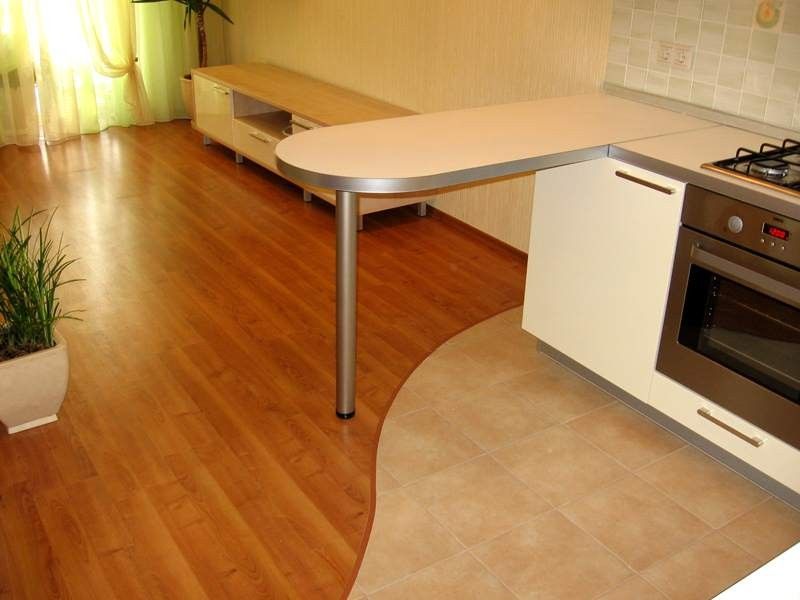 This product can be produced in various sizes, and all parameters can change: length, width and height of the panel. The most popular sizes of laminated panels are 122 x 21 cm, 129 x 22 cm, and more are also used long options panels. The thickness of the lamella varies between 7-12 mm depending on the manufacturer.
This product can be produced in various sizes, and all parameters can change: length, width and height of the panel. The most popular sizes of laminated panels are 122 x 21 cm, 129 x 22 cm, and more are also used long options panels. The thickness of the lamella varies between 7-12 mm depending on the manufacturer.
In addition to the parameters of the panels, laminate has its own classification. Each product class is intended for use in a specific room.
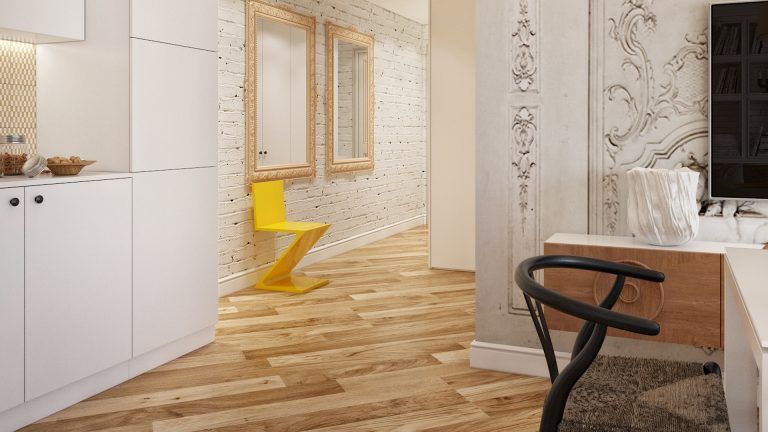 Choose moisture-resistant material for the kitchen
Choose moisture-resistant material for the kitchen Today, there is a graduation of laminate classes from 21 to 33. 21,22,23 laminate classes are intended for private use; they are often used in apartments and private houses. Classes 31,32,33 laminates are intended for use in domestic premises: assembly halls, large auditoriums, theaters and galleries. These classes of laminate have increased moisture protection and material density.
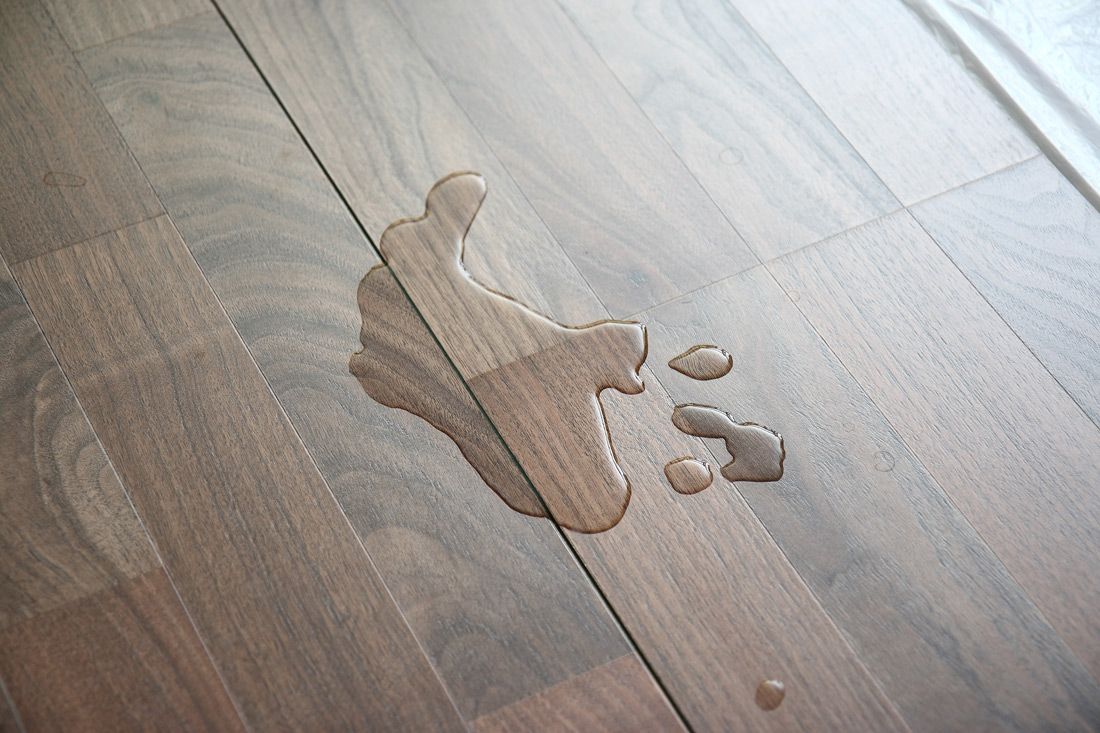 Such a coating can withstand constant load from a large number of people; it is well laid in rooms with high traffic, where many floor coverings cannot withstand a long period.
Such a coating can withstand constant load from a large number of people; it is well laid in rooms with high traffic, where many floor coverings cannot withstand a long period.
You can see a clear example of the correspondence of a certain class to a room from the table.
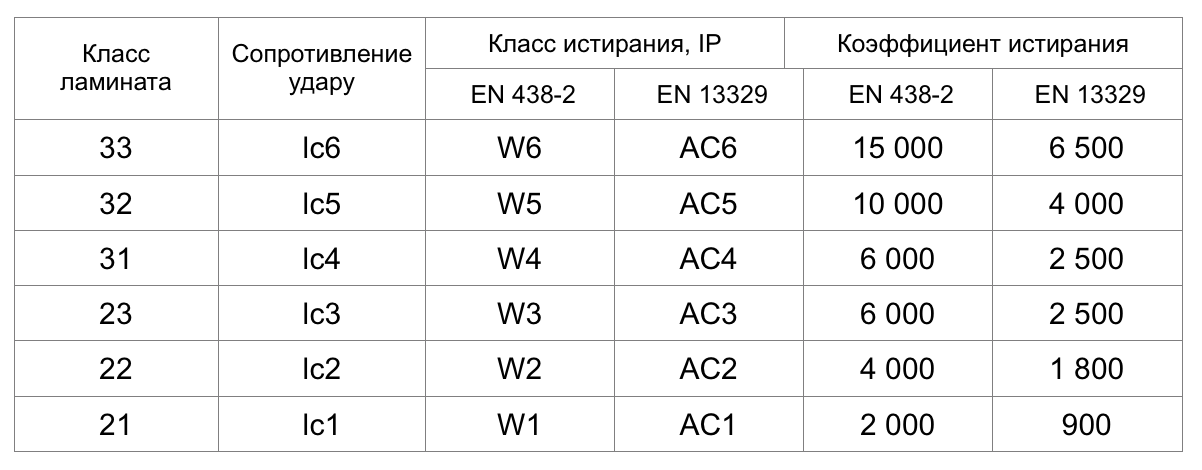
You should know that in addition to size and classification, laminate flooring may also differ in connection method. There is a simple option for joining laminated slabs Lock, which has modernized options. Such panels in the initial models of the line deform over time at the joints (they allow moisture to pass through) and are not dismountable. 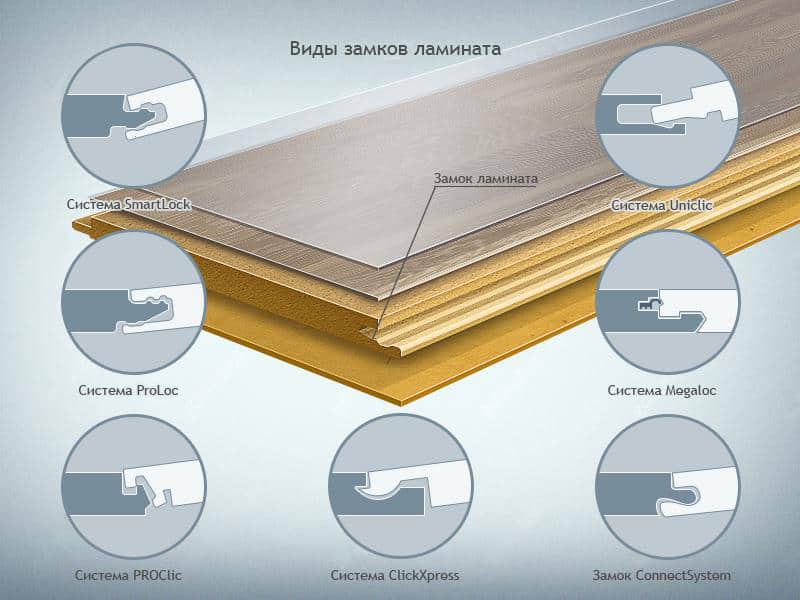
The Click series laminate joints are highly reliable; the joints are waterproof (for small amounts of water). Panels equipped with such locking system, can be disassembled and assembled up to 5 times, but the price of laminated products with this connection is quite high.
Linoleum
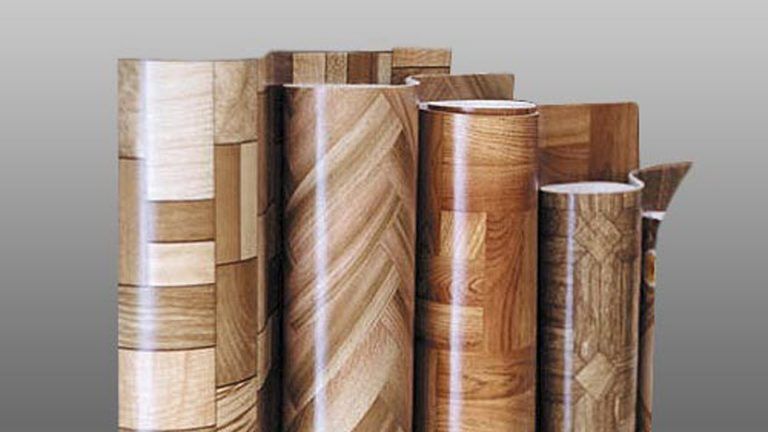 This coating can imitate any type of material
This coating can imitate any type of material
Linoleum is a roll material created on polymer based, which is intended for organizing flooring in various rooms both in private houses and apartments, and in trading floors and other large rooms.
Linoleum is a building material that has been on the market for quite a long time. Color palette The products are great. Linoleum can have a color that imitates the surface of a wooden or parquet floor, or a stone or tile flooring.
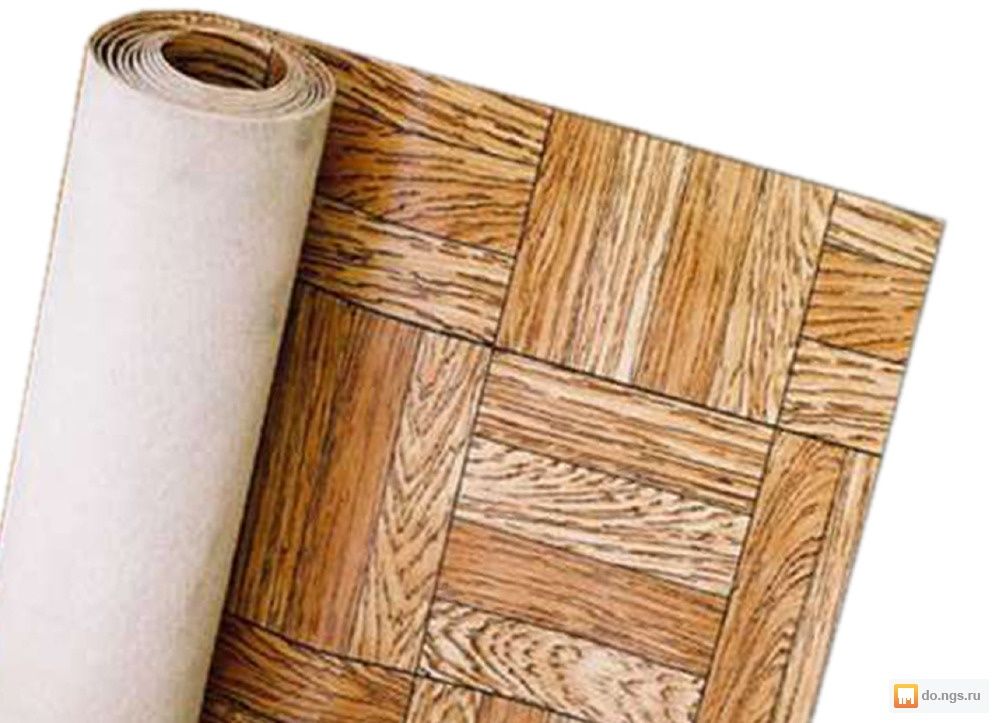 This roll material, like laminate, has some classification based on wear resistance, environmental friendliness and thickness.
This roll material, like laminate, has some classification based on wear resistance, environmental friendliness and thickness.
There are companies that produce linoleum with a small layer of insulation; this material is soft; experts do not recommend laying it in places with high traffic.
Linoleum is quite versatile flooring material, which can be installed in almost any room. This product is manufactured in various sizes, from 1.5 to 6 m wide.
Since linoleum is a rolled material, it is often selected in one piece for the entire room, which makes it possible to create a seamless flooring.
Carpet
 Carpeting gives the room a cozy look
Carpeting gives the room a cozy look Carpet, like linoleum, is roll material, but it distinctive feature is the presence of a fabric base that can react to sudden changes in temperature and high levels of humidity, so if you decide to lay carpet in your apartment, then place it in bedrooms, places with low traffic and having a stable temperature.
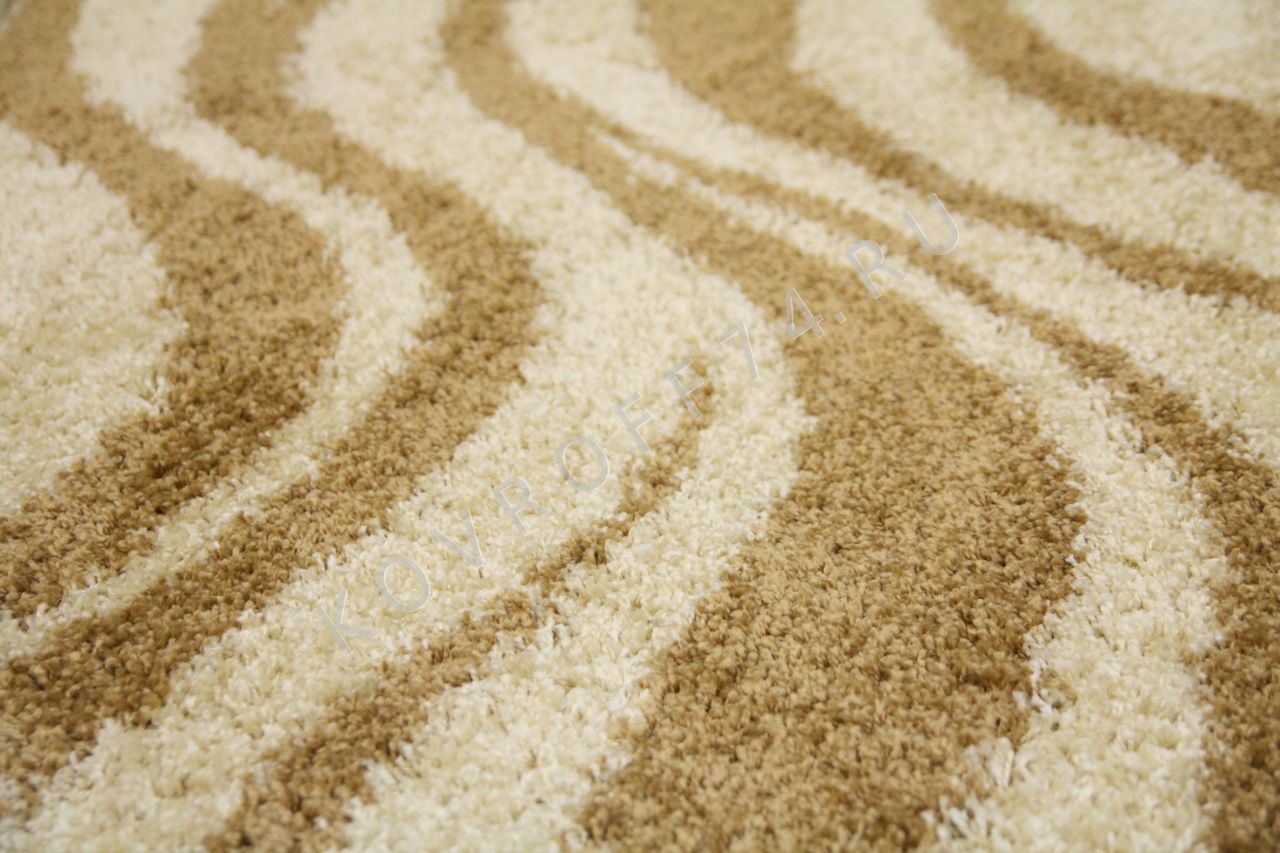 Carpet may differ in coloring, material of manufacture and pile length. The unconditional answer to the question of what is better to lay in a children's room or bedroom will be carpet. This material can give a certain room not only comfort, but also additional coziness, which will help create a pleasant and calm atmosphere. Learn more about how to choose correct coverage, watch in this video:
Carpet may differ in coloring, material of manufacture and pile length. The unconditional answer to the question of what is better to lay in a children's room or bedroom will be carpet. This material can give a certain room not only comfort, but also additional coziness, which will help create a pleasant and calm atmosphere. Learn more about how to choose correct coverage, watch in this video:
Caring for this type of flooring is not difficult. Low-pile carpet can be swept, vacuumed, and even washed with a damp cloth.
If your carpet has a high pile, such flooring can only be vacuumed with a special attachment so as not to spoil the appearance.
Ceramic tiles and their use for flooring
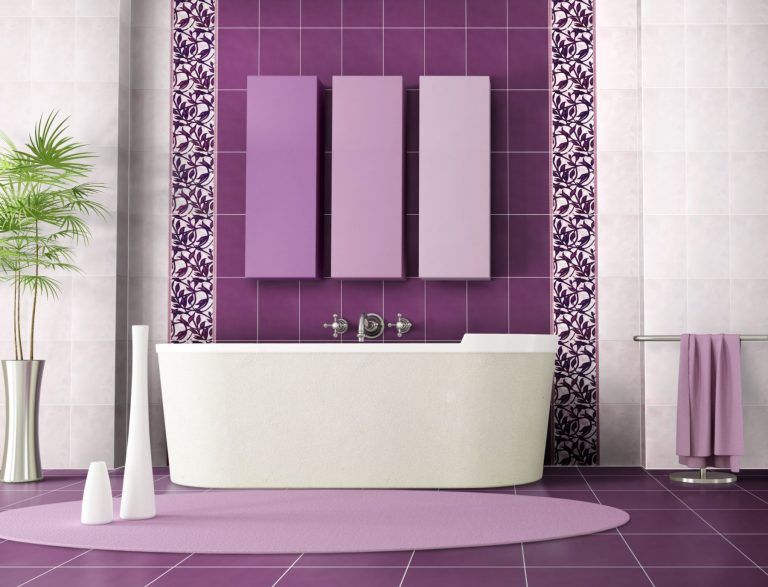 For wet rooms, tiles are an ideal covering.
For wet rooms, tiles are an ideal covering. Ceramic tiles are an indispensable building material. It's hard to imagine a house or apartment where tiles are not used.
It should be said that the tiles have excellent moisture-wicking properties and can be laid in rooms with high levels of humidity.
Such rooms include a balcony, a bathroom and a kitchen; it is in these rooms that tiles are used as flooring.
 This type of flooring does not allow moisture to pass through and allows it to be easily removed from the surface.
This type of flooring does not allow moisture to pass through and allows it to be easily removed from the surface.
Ceramic tiles, like other floor coverings, have a number of varieties: porcelain stoneware, clinker and monocottura. Each type of tile has its own advantages and disadvantages.
Clinker and porcelain tiles are durable and reliable products, but have little color variety. Monocottura cannot boast of high strength indicators, but at the same time it has a wide range of colors.
Features of installation of floor coverings
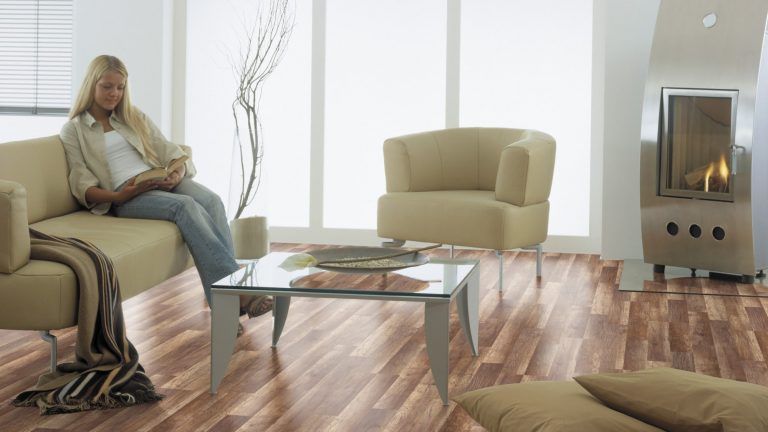 Great attention must be paid to the installation of the finishing floor covering, since its service life depends on this.
Great attention must be paid to the installation of the finishing floor covering, since its service life depends on this.
In order for the flooring to be laid efficiently, it is necessary to strictly follow process installation
Installation of laminate, carpet and linoleum.
Laminate, linoleum and carpet have many similar requirements for installation. Any of these products can be laid either on the subfloor or on the old coating. But the cover on which the material will be spread must be perfectly smooth and have no cracks or other damage. If you notice a defect in the subfloor before installation, it must be corrected. For more information on how to install laminate flooring, watch this video:
To repair cement screeds, you should use special repair mixtures, with the help of which you can repair all the unevenness and imperfections of the surface. All repaired areas must be sanded and brought to the general level of the flooring.
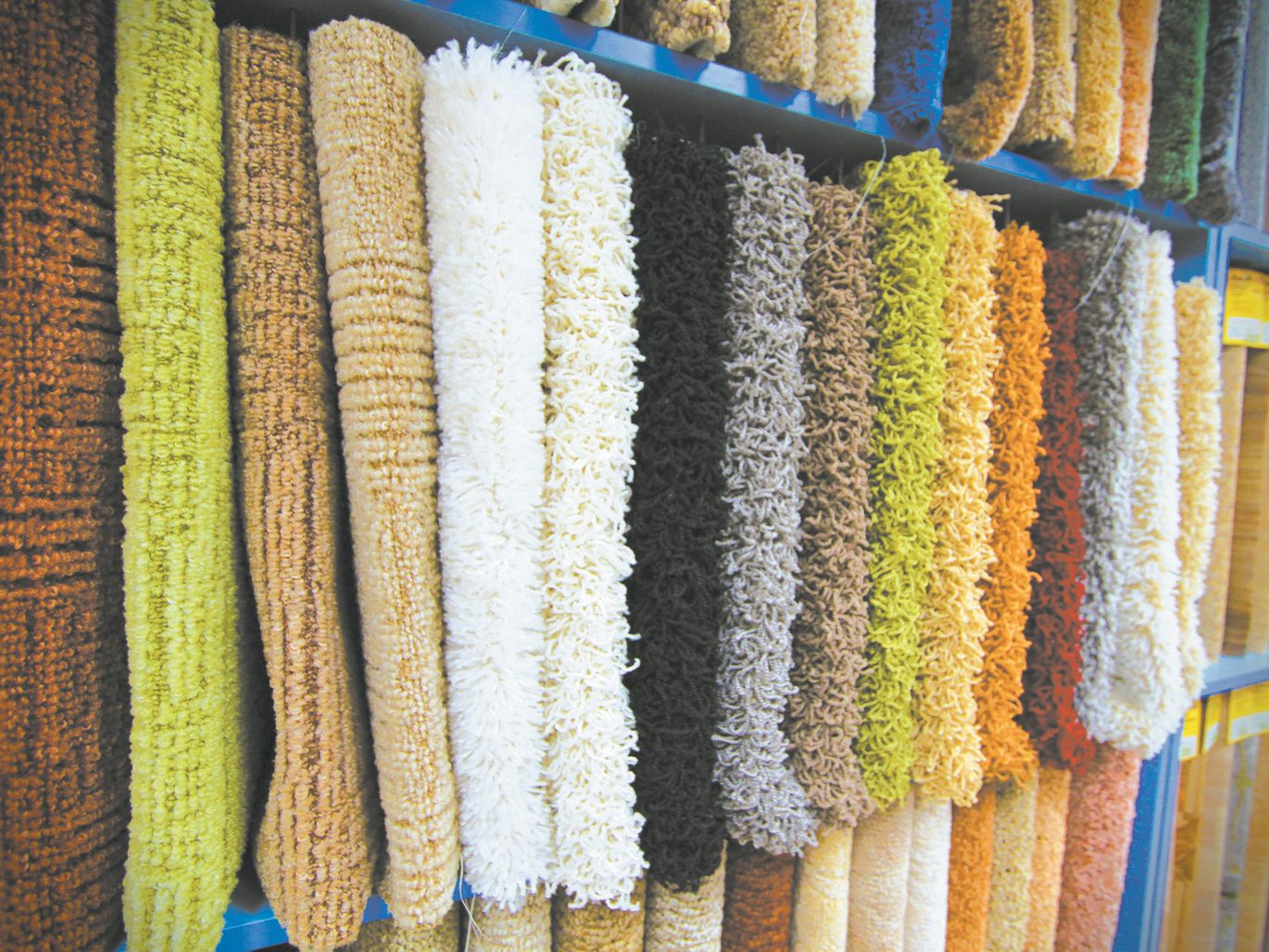 It is also better to lay carpet on a floor lined with plywood.
It is also better to lay carpet on a floor lined with plywood. Installation of the laminate should be done on top of a cork or polyurethane backing, which is rolled out onto plywood or another type of subfloor.
The peculiarities of installing linoleum and carpet are that this material must be left in the room where it will be installed and its temperature must be reached; only after that can the rolled material be rolled out.
Linoleum and carpet are laid both with and without adhesives. If products are laid without glue, then the material should be well leveled and evenly distributed over the surface (without waves).
 Along the perimeter of the room, these coverings are held in place by baseboards
Along the perimeter of the room, these coverings are held in place by baseboards The fastening elements will be baseboards. Roll stacking building materials The glue is applied from the center of the room. The cut piece is conditionally divided into two parts and spread at the installation site.
First, one half of the material is wound into a roll and coated with the floor, after which linoleum or carpet (but not all types) can be laid; the same operation is done with the second half. Be sure to roll out the product from the center of the room, expelling all the air to the edges.
Laying tiles on the floor
As mentioned above, tiles in apartments as flooring are most often used in the bathroom, kitchen and balcony. To lay the tiles well, you need to make sure that the rough screed is reliable or create it yourself. For more information on how to properly install ceramics in an apartment, watch this video:
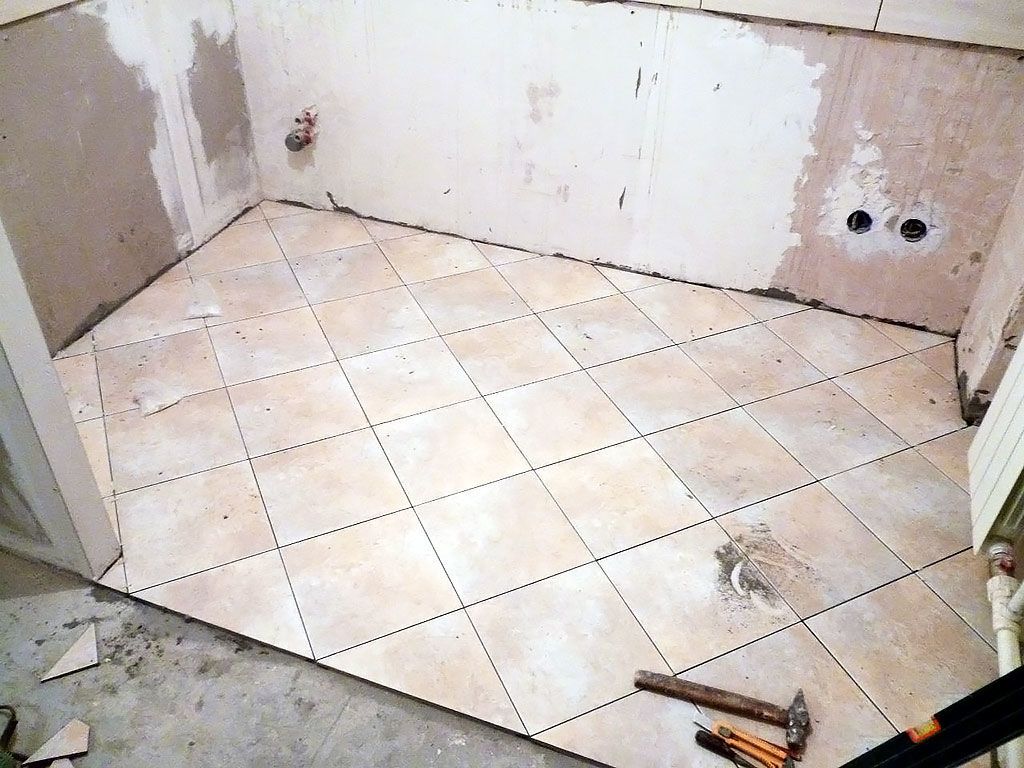 It is advisable to lay ceramics on a layer of waterproofing
It is advisable to lay ceramics on a layer of waterproofing If you intend to install the material on a finished subfloor, then it must be thoroughly inspected and renovation work, as above.
After which the surface is primed, many builders recommend doing waterproofing and only then laying the tiles.
The tiles are mounted on a special adhesive composition, which dries quickly, so the volume of the batch should depend on the speed of production of the material, so that the solution does not have to be thrown away.
In order for the tile flooring to have an attractive appearance, it is necessary to create equal gaps between the tiles.
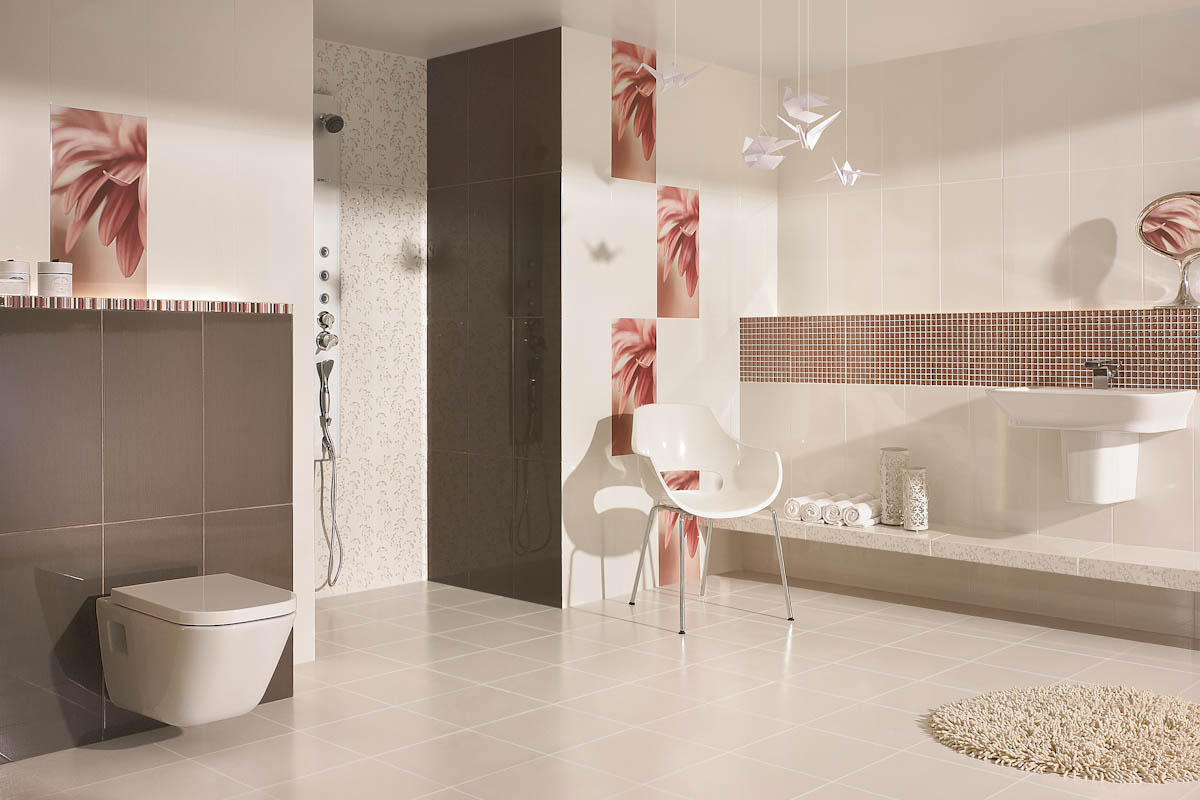 There are special “cross” stops, which are installed 2 on each side of the tile (depending on the size, more can be installed).
There are special “cross” stops, which are installed 2 on each side of the tile (depending on the size, more can be installed).
Based on the above article, each owner will be able to find for himself the answer to the question: “What to lay on the floor?” Having familiarized yourself with popular flooring materials and understanding the principle of their installation, you can independently choose products for a specific room in the apartment and slowly carry out the installation.
Construction of a private house is a long process that requires a lot of time, labor and finances. Many, in an effort to save money, decide to carry out some of the work themselves. How to make floors in private homes without resorting to the services of builders? It’s quite possible to make the floor yourself if you have necessary materials, tools and knowledge.
Which floor design to choose?
Before you begin work on the construction of floors in a private house, you need to decide on the type of construction of the future coating. Experts distinguish three types of structures:
- Single;
- Double;
- Concrete floor.
The choice of one type of construction or another depends on the characteristics of the building in which the floor is laid. The operating conditions of a private home can be considered the determining factor. Single floor represents the most simple design, the construction of such a floor does not require a lot of time and materials, since the floorboards are attached with nails directly to the joists. The main disadvantage of a single plank floor is the limited use of it: such a covering would only be appropriate in small summer houses and dachas. For a home where it is planned year-round accommodation, single design is not suitable.
 Scheme of the possible implementation of a “double” floor and a concrete one.
Scheme of the possible implementation of a “double” floor and a concrete one. If you want to do private house, suitable for living at any time of the year, then you will have to arrange a double floor. This type of construction is warmer, reduces heat loss and provides comfortable accommodation in the house during the cold season. A double floor consists of several layers, the main ones being rough and finishing coatings. Between these two layers, hydro- and thermal insulation materials, protecting both the floor itself and the entire house from destruction.
Most often, the rough covering in a private house is assembled from unedged boards, and the finished floor is made of tongue-and-groove floorboards. All work, including laying thermal insulation from sawdust or expanded clay, can be easily done with your own hands.
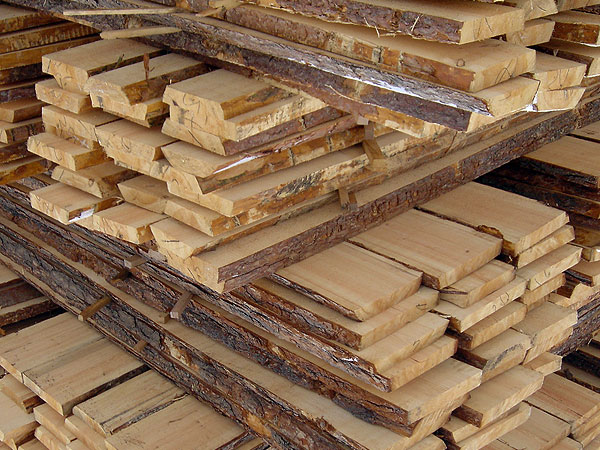 Boards for the subfloor.
Boards for the subfloor. The third possible type of floor construction in a private house is pouring a concrete screed. Compliance with all rules preparatory work, laying waterproofing, pouring cement mortar and timing its drying will allow you to get a solid, high-quality floor, ready for finishing with any decorative coating.
Installation of wooden floors
When building a private house, many people prefer to make the floor out of wood. This desire to have high-quality wooden flooring underfoot is explained by the desire to use environmentally friendly clean materials which includes wood. In addition to being highly environmentally friendly, such a floor has a number of other advantages.
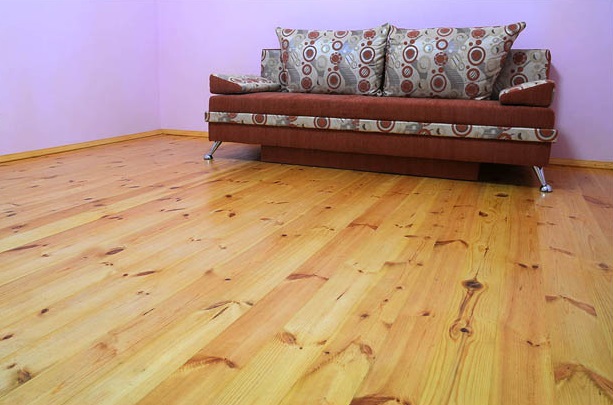
Wooden floors are easy to install and easy to repair during use. Due to the low thermal conductivity of the material, such a floor will retain heat inside the house without letting it out. Plank flooring made from high-quality wood has a long service life and an attractive “natural” appearance.
To make a floor in a private house, you need to choose the right wood. The choice of source materials should be based on the design features of the structure itself. Floor installation in country house must necessarily provide for the presence of a subfloor that plays the role of air gap. If such a layer is missing, the wooden floor will quickly become unusable due to exposure to moisture. In addition, for a good floor, it is important to have all the layers of the structure, including joists, rough flooring, hydro- and thermal insulation, and a finishing coating.
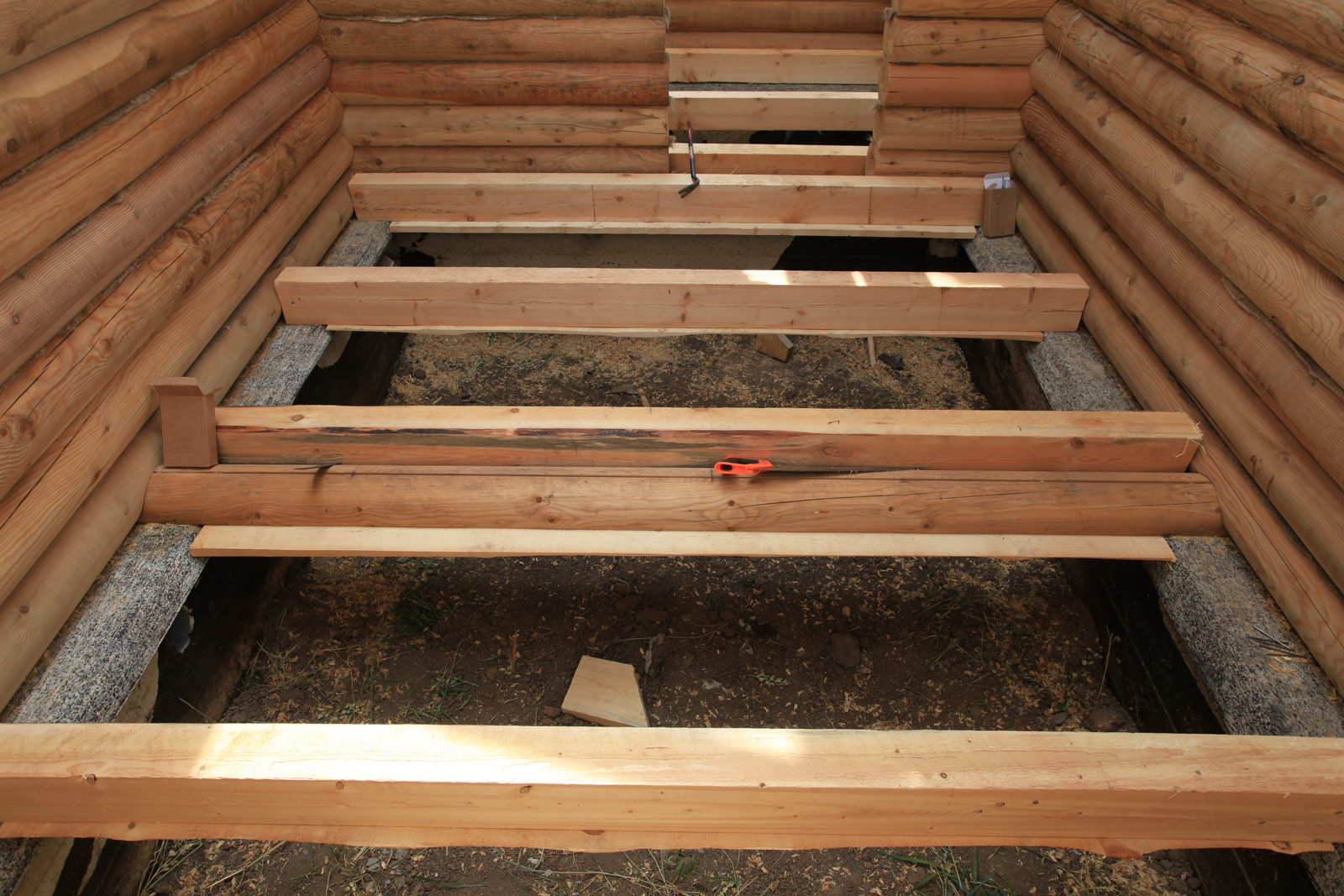
The floor in a private house is subject to significant mechanical loads, so for its construction it is necessary to choose wood with good technological characteristics. The boards must be well dried, the recommended moisture content is no more than 12%. Any chips or cracks on the surface of the material are not acceptable. Experts recommend giving preference to wood coniferous species, pine, larch, fir, cedar are suitable. To increase the service life of the future floor, all boards must be treated with an antiseptic and fire retardant.
Installation of a wooden floor begins with determining the locations for the support posts and their installation. Fertile layer the soil around the entire perimeter of the house is removed and removed, gravel is poured in its place, and sand is poured on top of it. Layers of gravel and sand must be compacted well. Waterproofing material is laid on the ends of the support pillars; most often, ordinary roofing felt is used for these purposes.
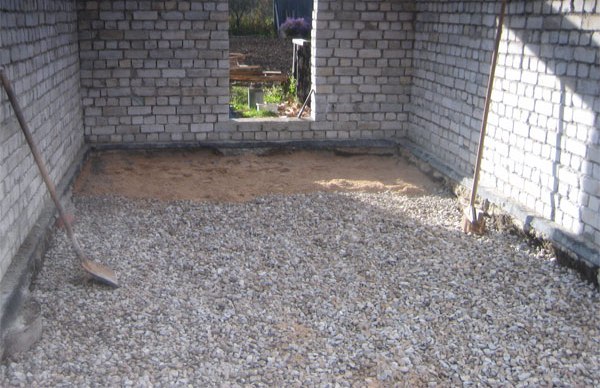 Backfilling with gravel.
Backfilling with gravel. Next, we make beams that need to be secured to the posts with metal corners. It is better to make floors in a private house with double insulation. Experts suggest first laying on the sides of the beams plywood sheets, and then place them on them mineral wool or other insulating material.
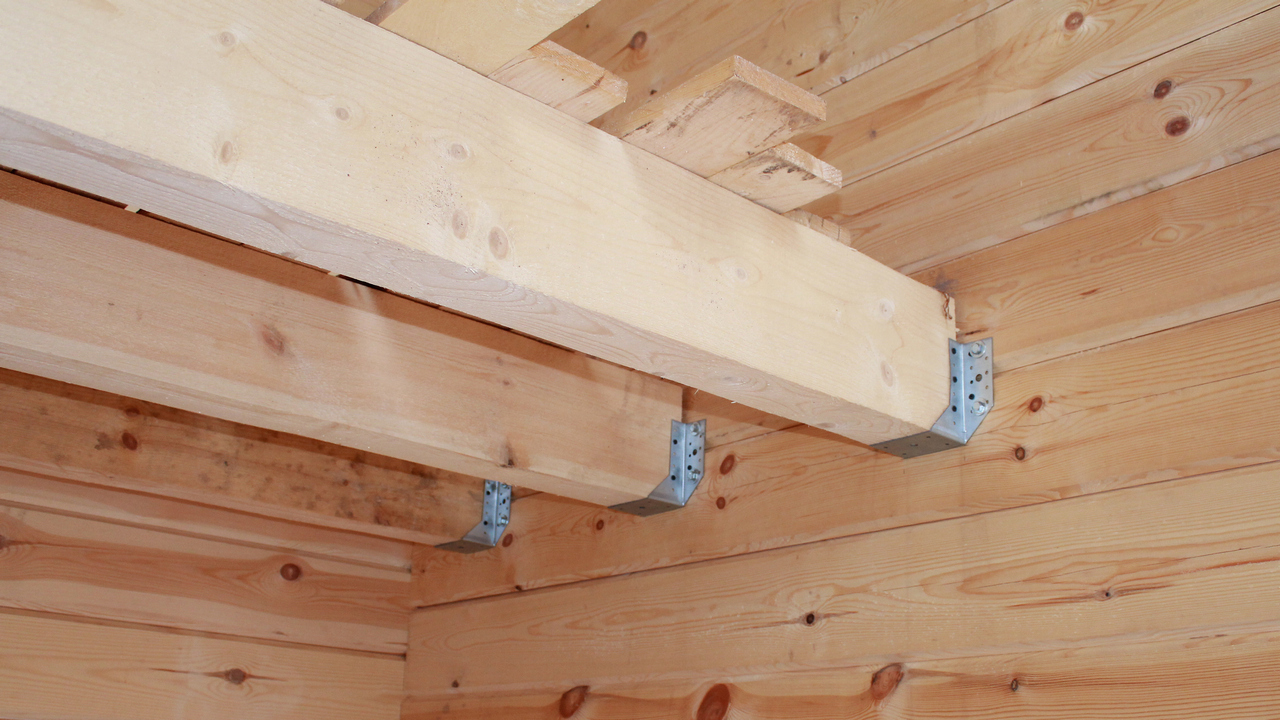
When the insulation layer is ready, you can begin laying the rough covering. The boards of this layer should fit well to each other; ordinary self-tapping screws can be used to fasten them to the beams. It is better to leave some distance between the flooring and the walls of the house: a gap of 1.5 cm can be considered the norm for this part of the floor. These gaps provide ventilation to the entire floor structure and protect the walls from expansion of the floor boards as they subsequently dry out.
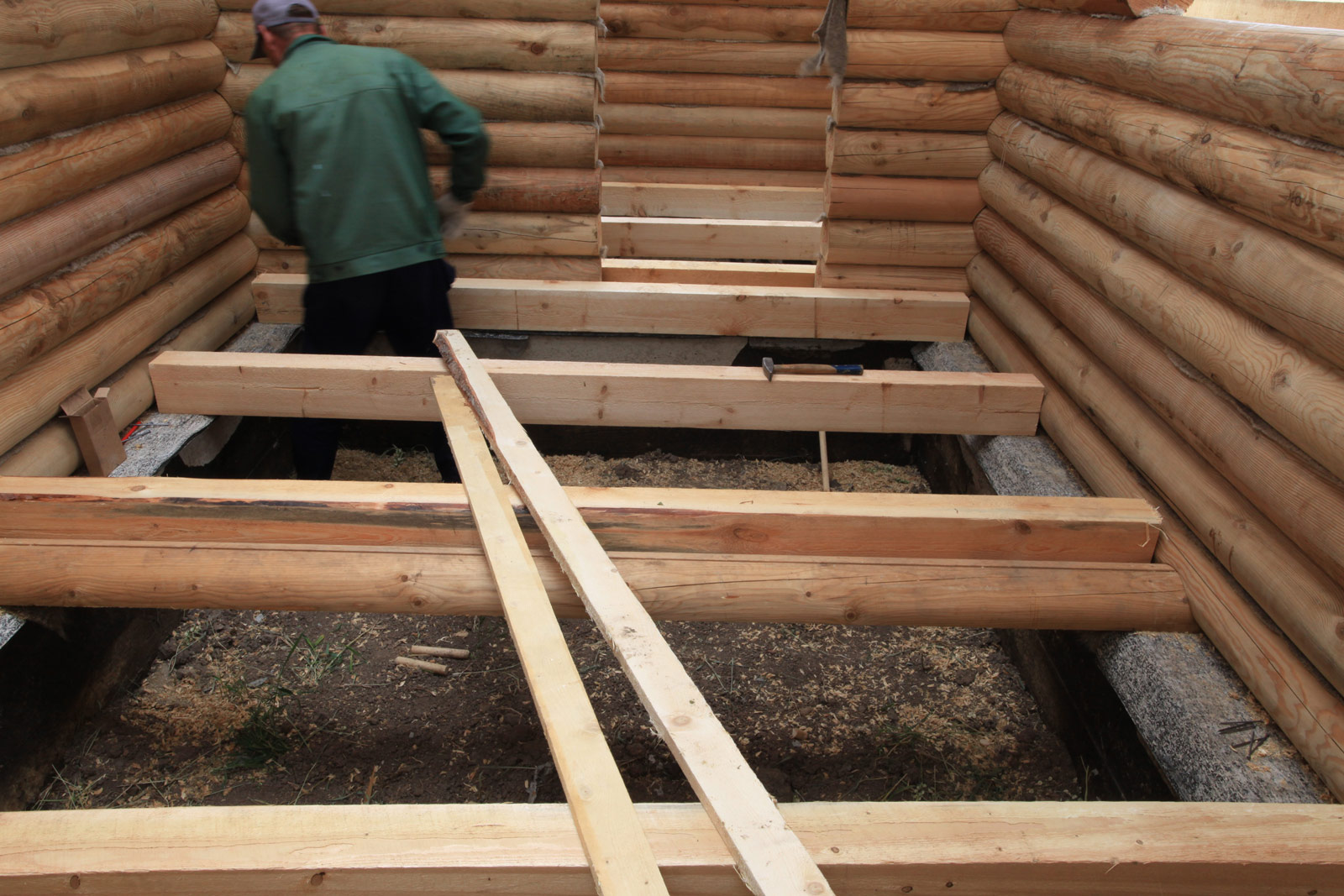
A layer of vapor barrier made of polyethylene film with a thickness of 200 microns is laid on top of the subfloor. The joints of individual pieces of film must be taped, and the edges must be folded onto the walls to a height of about 20 cm - the height of the final coating. When the film is laid and secured, you can proceed to assembling the finished floor.
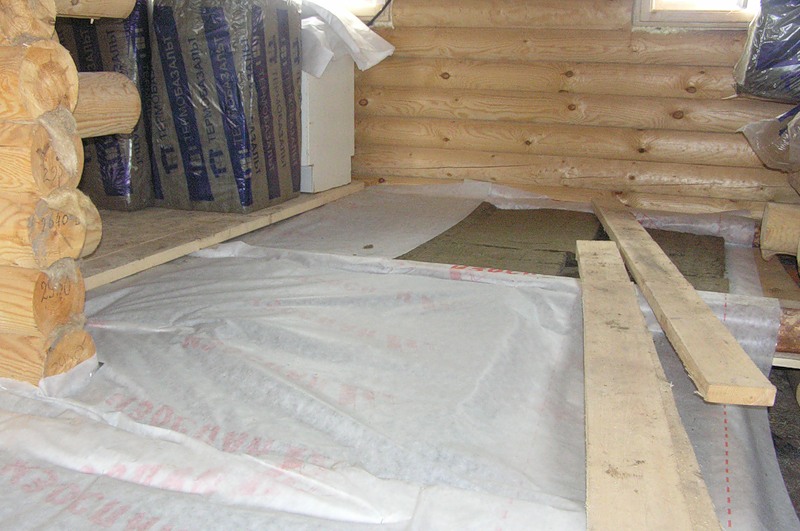
The finished floor is assembled from solid wood boards or plywood sheets. Plywood sheets are easier to attach, but in the end they don’t look very attractive. Therefore, if you want to leave in your home wooden floors, then it is best to immediately assemble the finishing coating from a tongue-and-groove board, and if you plan to cover it decorative material– just secure the plywood sheets. After assembling the finished floor, plank floors must be coated with varnish, which will not only protect the material from external influences of a mechanical and chemical nature, but will also emphasize decorative qualities natural wood.
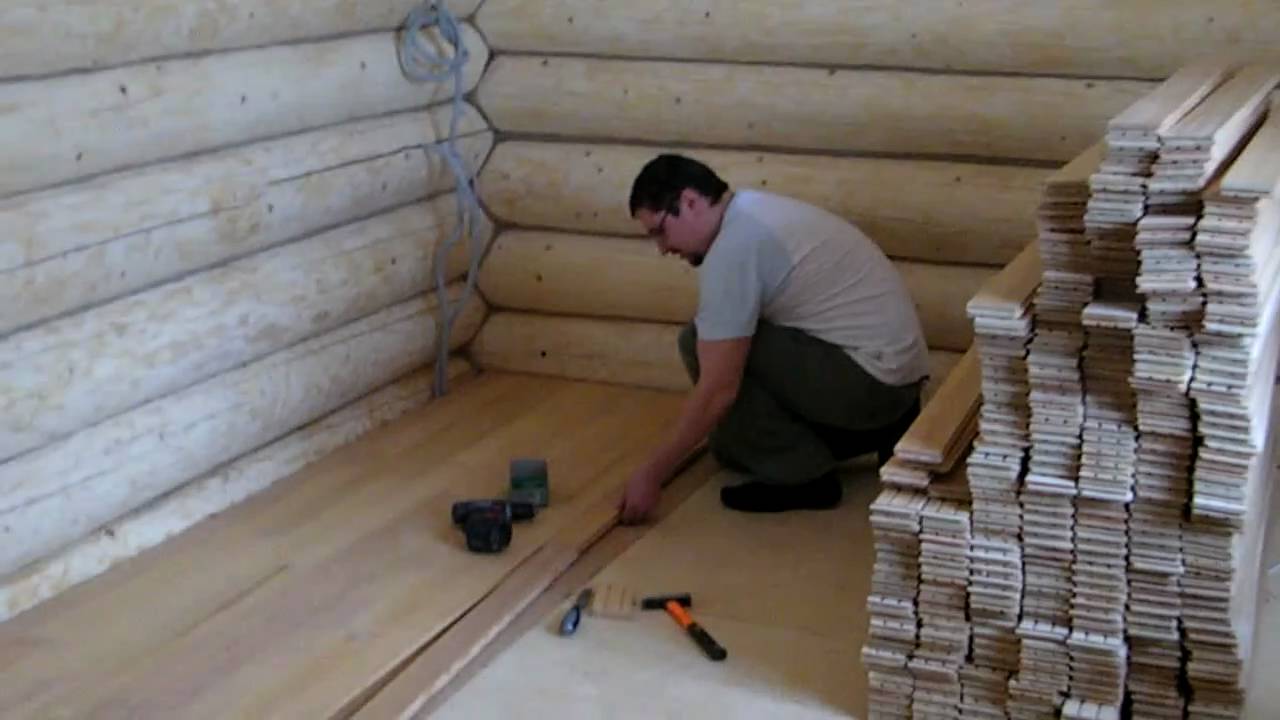
Pouring a concrete floor
The installation of a concrete floor in a private house begins with preparatory work. First, markings are made on the site of the future floor and gravel fill. The soil is first cleared of plants and the top layer, and then compacted. Next, a layer of gravel is poured, which also needs to be compacted well. In the construction of a concrete floor in a private house, gravel will act as thermal insulation. Sand is poured on top of the gravel. After compacting it, a thick layer is spread on the surface. polyethylene film, acting as a waterproofing material.
How to make a concrete floor in a private house? After installing the waterproofing layer, you can begin pouring the screed. Cement screed in a country house it is poured in the same way as a screed in an apartment: levels are set and the mortar is poured, which is leveled from wall to door according to the rule.
When pouring a concrete screed, several features should be taken into account. The solution for pouring must be fresh; for its preparation it is recommended to use cement of a grade not lower than M-300, screening out sand and water. To increase the strength of the concrete layer, you can add special compounds– plasticizers that will give the future coating additional strength.
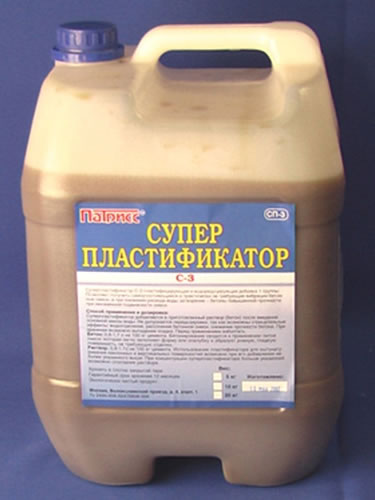
When pouring screeds with a height of 5 cm or more, you can use reinforcing elements or reinforcing mesh, which is laid on waterproofing layer before pouring. In the case of installing warm water floors in a private house, the use of reinforcing mesh and the addition of plasticizers to cement mortar are mandatory procedures.
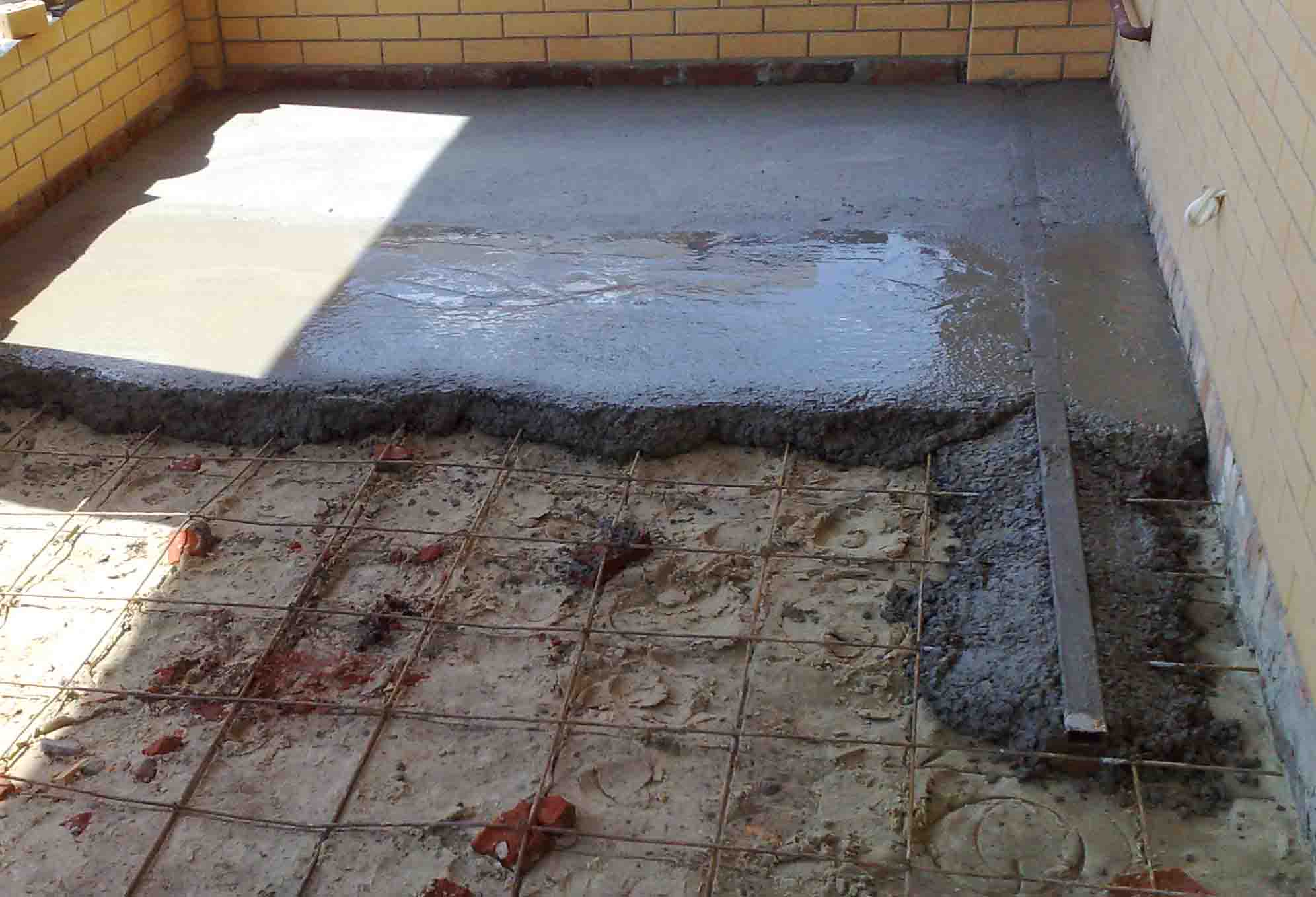
When the concrete hardens a little after pouring, you can remove the beacons. The voids left after their removal are filled with the same solution. After filling and leveling all the cracks, the floor is covered with polyethylene and left to dry. Drying a concrete floor is a long and responsible undertaking. The concrete must dry on its own within a month; if you have a heated floor system, heating should not be turned on until the screed is completely dry. Turning on heating elements, you will help the concrete crack even before the premises are used. When drying concrete screed It is recommended to periodically moisten it with water and cover it again with polyethylene: if this requirement is met, the coating will gain maximum strength and will not crack.
In order to correctly fill the cement, remove the beacons and dry the concrete, it is recommended to look at photos of the work of builders who specialize in arranging floors in private homes.
Finishing
Making just a finished floor in a private house from scratch is quite simple, but sometimes additional installation is required decorative covering. You can also cope with this problem yourself. How can you cover the floor in a private house?
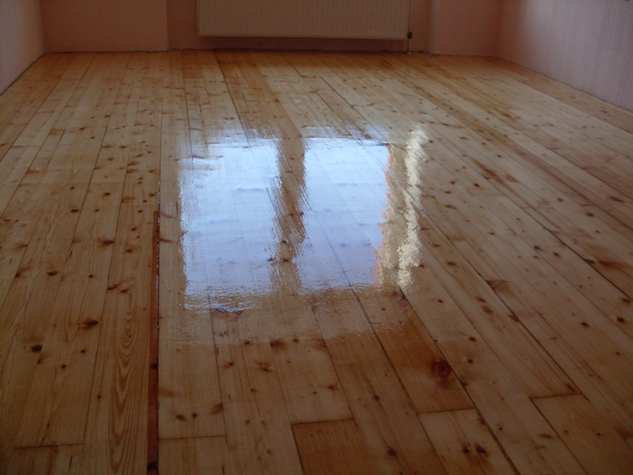
The most the best option For a private house, a double floor made of boards can be considered. The finishing coating of this design does not need to be coated with anything additional. This option is practical and beautiful, and also has a long service life. proper care. Before use, the boards should be treated with protective compounds and varnished to protect them from sand, dirt, water and chemicals. For coating, you can choose either a transparent varnish, leaving the natural color of the wood, or a colored one, giving the floor a different shade.
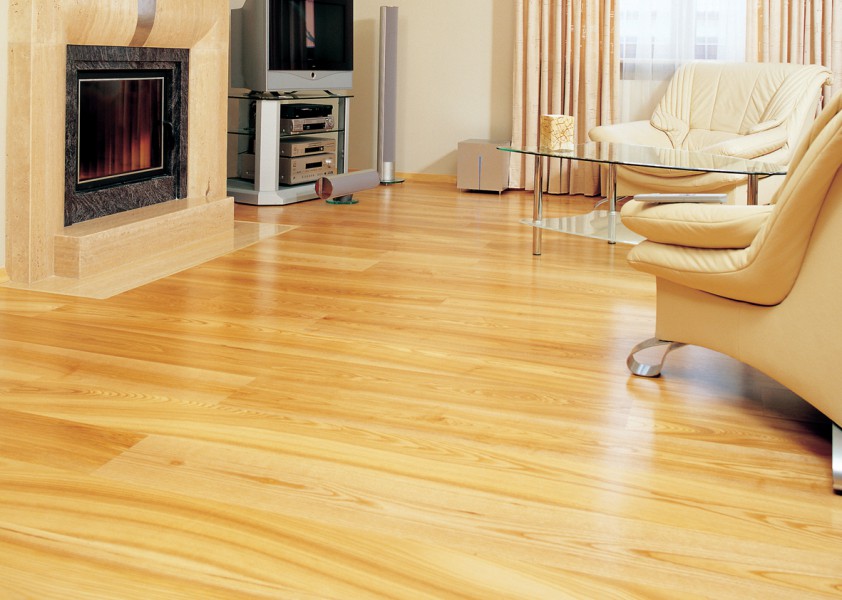
A concrete floor in a private house requires a top layer of decorative coating. Parquet or parquet boards will look chic as a floor finish. This coating is quite expensive, but is highly environmentally friendly, has good antistatic and thermal insulation characteristics. It doesn’t make sense to make parquet, but in a house where you plan to live permanently, such a covering will look appropriate.
As analogues of parquet, you can consider more affordable laminate, linoleum, carpet and ceramic tiles. Laminate is suitable for the living room and bedrooms, ceramic tiles will look appropriate in the kitchen, bathroom and hallway. It is also better to place linoleum only in the kitchen or hallway. The use of carpet is more limited: the material is suitable for finishing floors in bedrooms.
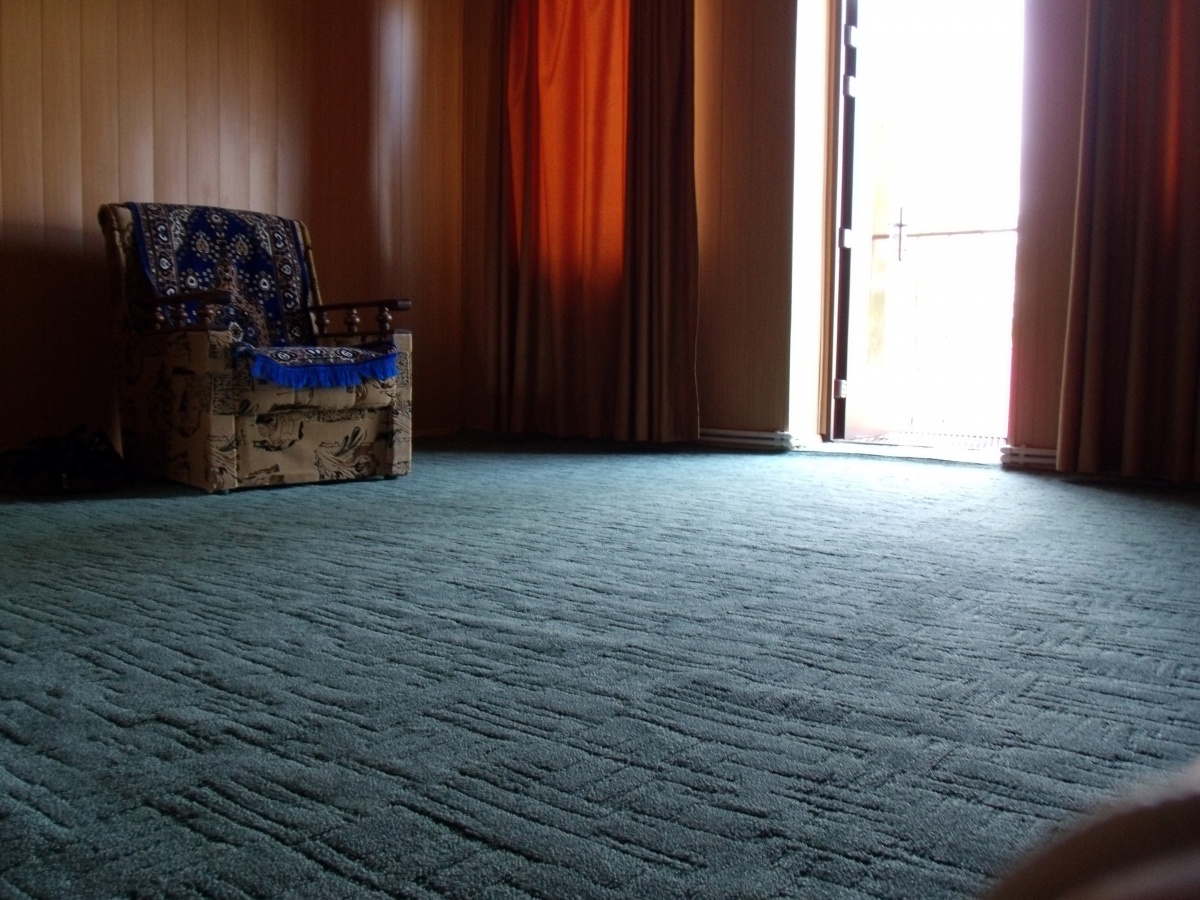
The range of modern colors and textures of the listed materials allows you to choose a coating to suit every taste. In a private home, floors with natural patterns that replicate the texture of wood or natural stone would look appropriate.
The choice of flooring is a rather serious and important issue that arises during the renovation process, since it is the floor that takes on the greatest load, not taking into account the fact that it should be aesthetically attractive and practical for as long as possible.
Parquet, linoleum, ceramic tiles - the very first thing that comes to mind when we ask the question: “What to lay on the floor?” Naturally, you want to choose the best, because everyone knows that a perfectly selected floor covering emphasizes good design interior
Parquet floors
Of course, parquet floors, parquet board are a classic element of the interior. Nothing can compare with the nobility and naturalness of this natural natural material. Parquet flooring is undoubtedly not cheap, but it will last for decades. It is strong and durable; the aesthetic advantages of this material can hardly be overestimated. In this case, you should pay attention to the fact that this floor covering is very susceptible to mechanical as well as chemical influences - scratches and chips may appear on its surface. Parquet needs to be provided with certain conditions and careful care. In addition, it does not tolerate excess moisture, as well as intensive use, so it is usually installed in the living room and bedroom, but this flooring cannot be called ideal for the corridor and kitchen.Linoleum
You can choose such a common floor covering as linoleum. Despite the fact that it was already well known to our great-grandmothers, today this material is getting a second life thanks to new technologies. Modern linoleum is made from natural materials, synthetic polymer, PVC. Natural coating necessary special care, and it is often quite problematic to buy it, since it is usually sold in large quantities, to order. Therefore, artificial linoleum made from polyvinyl chloride has become more widely used.Today's linoleum is a material of completely different quality and consumer properties than the previous one. It is an excellent heat insulator, does not accumulate electricity, is practical, hygienic, and therefore ideal for allergy sufferers. In addition, the skeleton modern coating– fiberglass, due to which the strength, durability, and durability of linoleum far exceed those of the previous material. This coating can last up to 30 years. In addition, there is linoleum with water-repellent substrates and cork layers. Today, this traditional flooring material is offered in the form of convenient independent device tiles and floorboards. The parts are connected to each other using the push-fit technique. Tiles are produced in various color scheme, and offers great possibilities for implementing a wide variety of patterns on the floor.
Ceramic tiles
A widespread type of coating is ceramic tiles, also successfully used in decorative design. She is unpretentious and has tall performance characteristics, however, it is more often used for work spaces, dining rooms, and hallways. But, if the premises mean underfloor heating, then tiles are best suited for each room.Naturally, traditional and long-known floor coverings will always be popular and in demand, but today, unlike previous times, the choice is not limited to several types of materials. Modern technologies offer new, improved materials that meet all necessary requirements: laminate, carpet, cork.
Laminate flooring
Laminate is very beautiful and durable, wear-resistant, practical and relatively inexpensive material, which, due to its many characteristic advantages, has recently become a worthy replacement for standard parquet. High quality achieved thanks to three stable layers securely connected to each other. The upper one consists of a decorative film enriched with resin, pressed with protective film onto the bearing surface. Each layer has a melamine coating that protects the slab from moisture.Laminate is not afraid of exposure to ultraviolet rays, so it retains its aesthetic qualities throughout its service life and has absolute mechanical strength and heat resistance. This coating withstands impacts and point loads furniture legs, high heels, prevents the risk of thermal damage after contact with a dropped match or cigarette. Paint, fuel oil, nail polish, and household dirt are simply removed from the floor without leaving any traces, which allows you to lay this coating in any room without exception.
The aesthetic properties of laminate are excellent.
The assortment includes colors of popular tree species: oak, cherry, walnut, ash, maple and others.
Another advantage laminated coverings– ease of installation work: according to the manufacturer’s instructions, installation can be carried out by a person who does not have special skills.
Of course, the choice of flooring depends on your desires and capabilities, so before you decide on decorative finishing, clearly decide what you ultimately want to get from your new floor, only then buy it with confidence.





